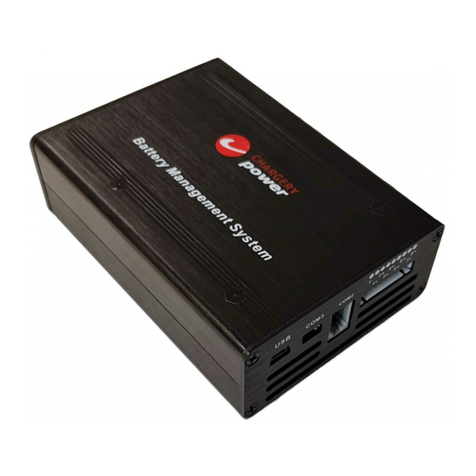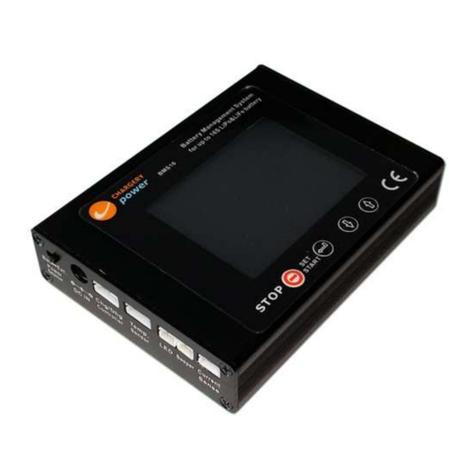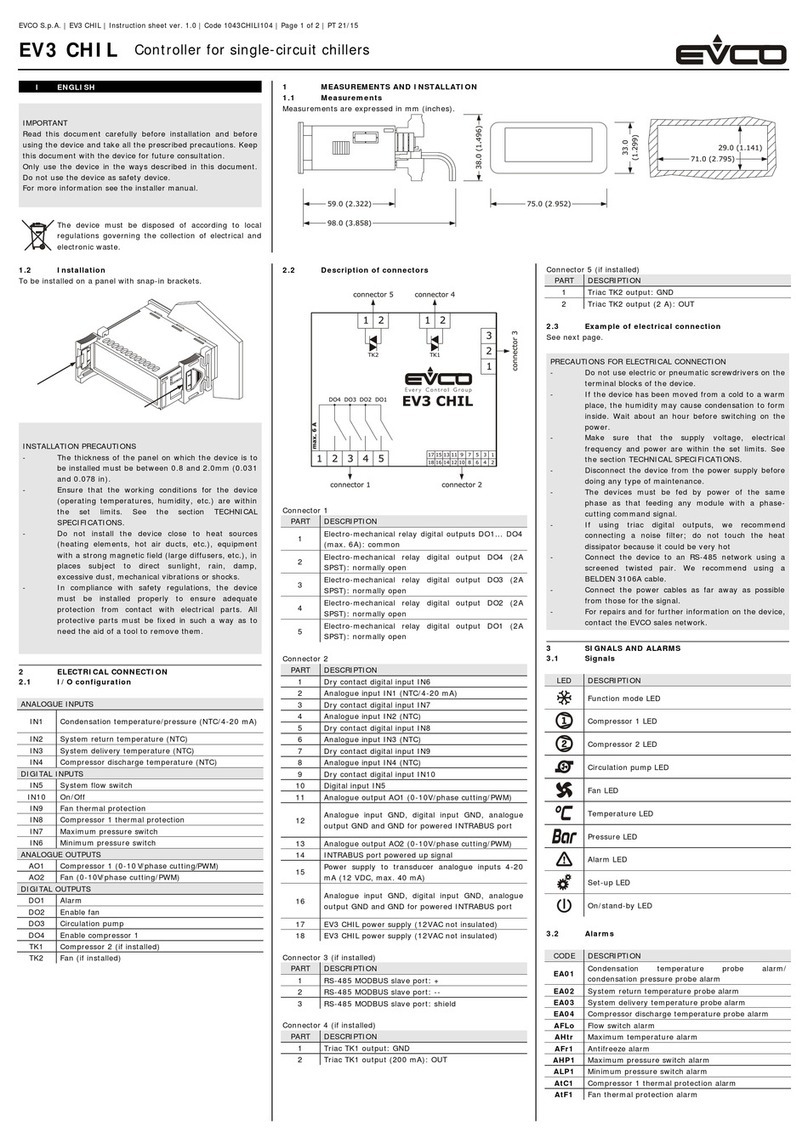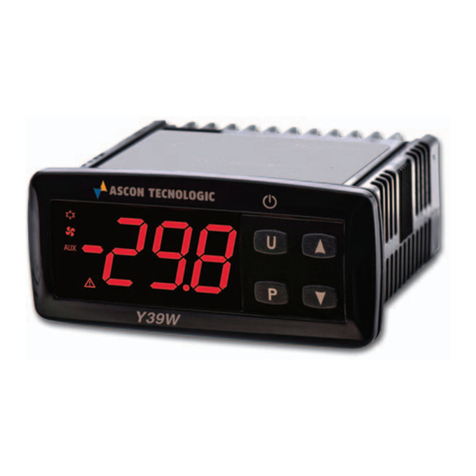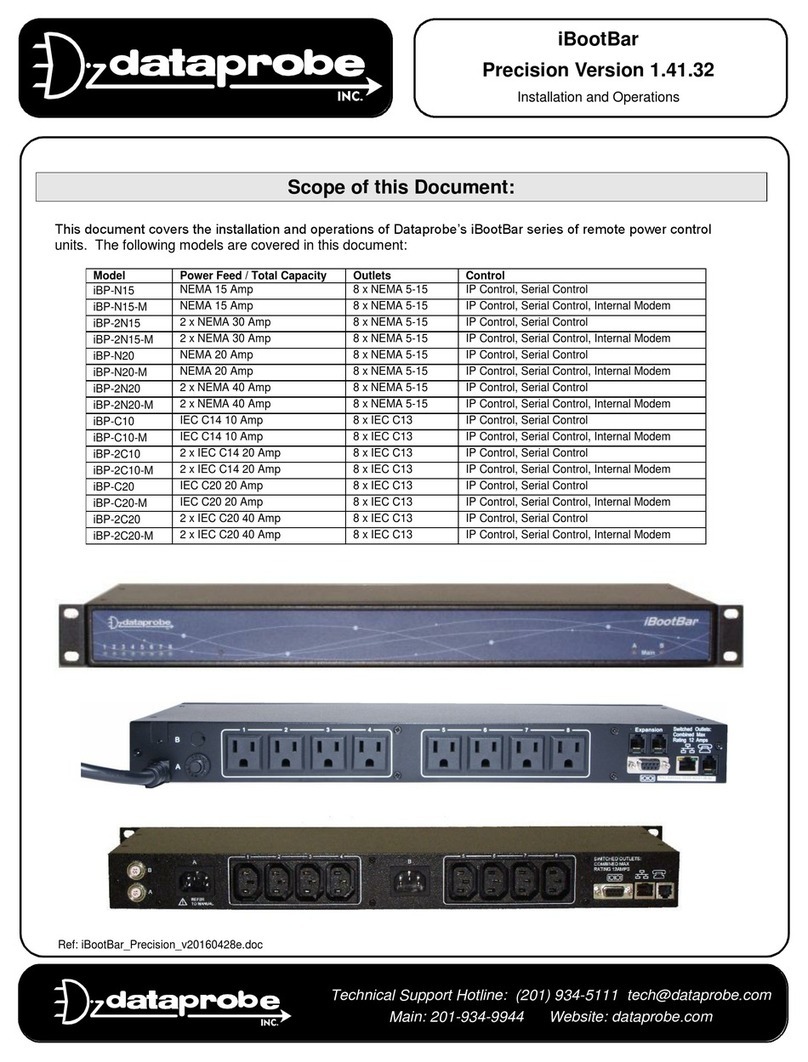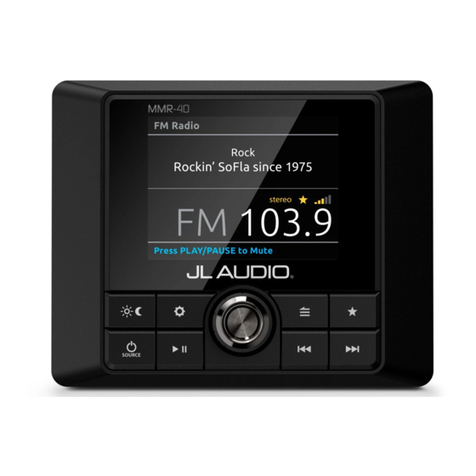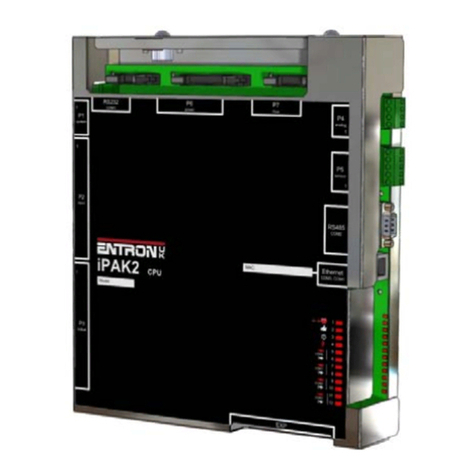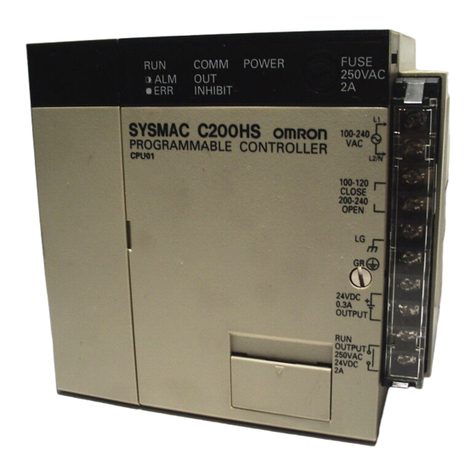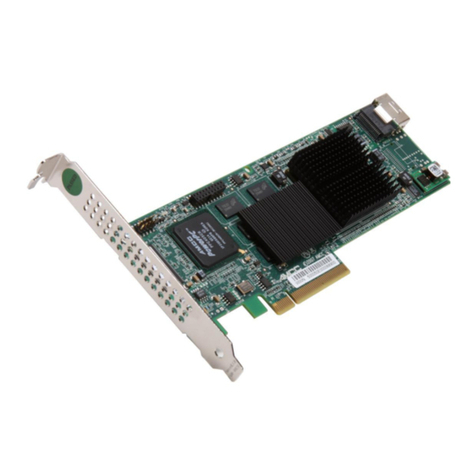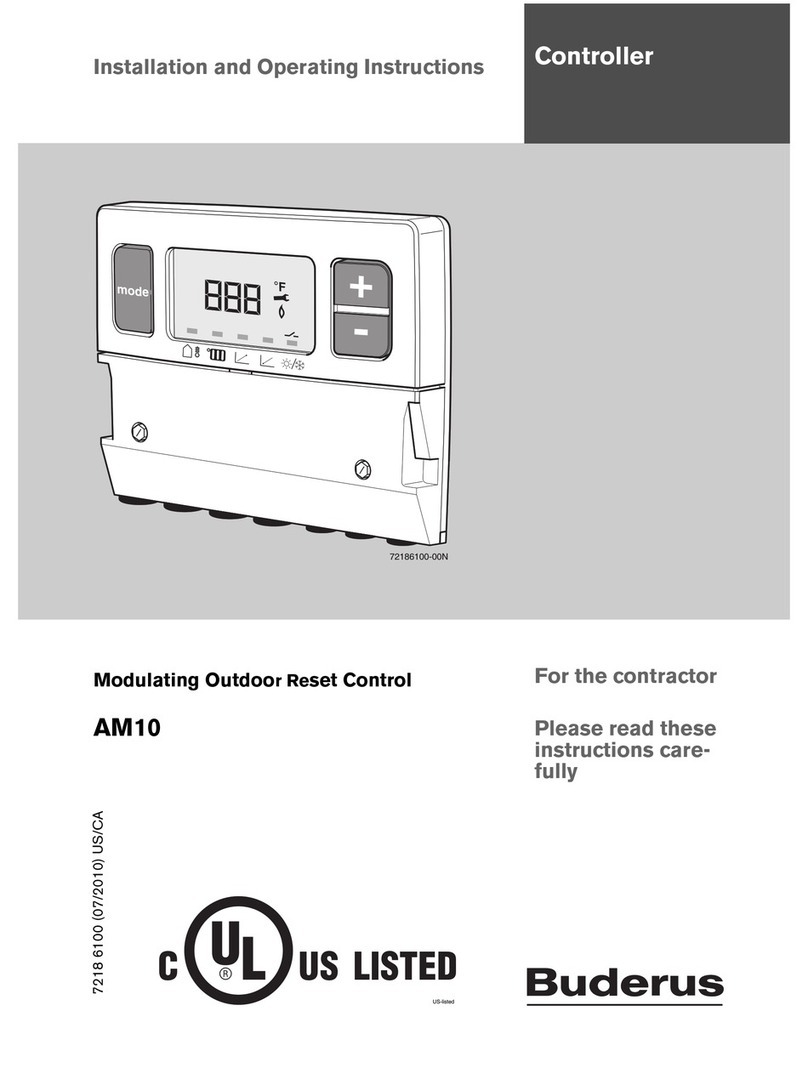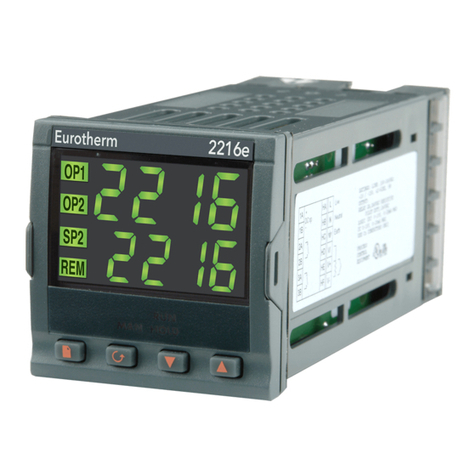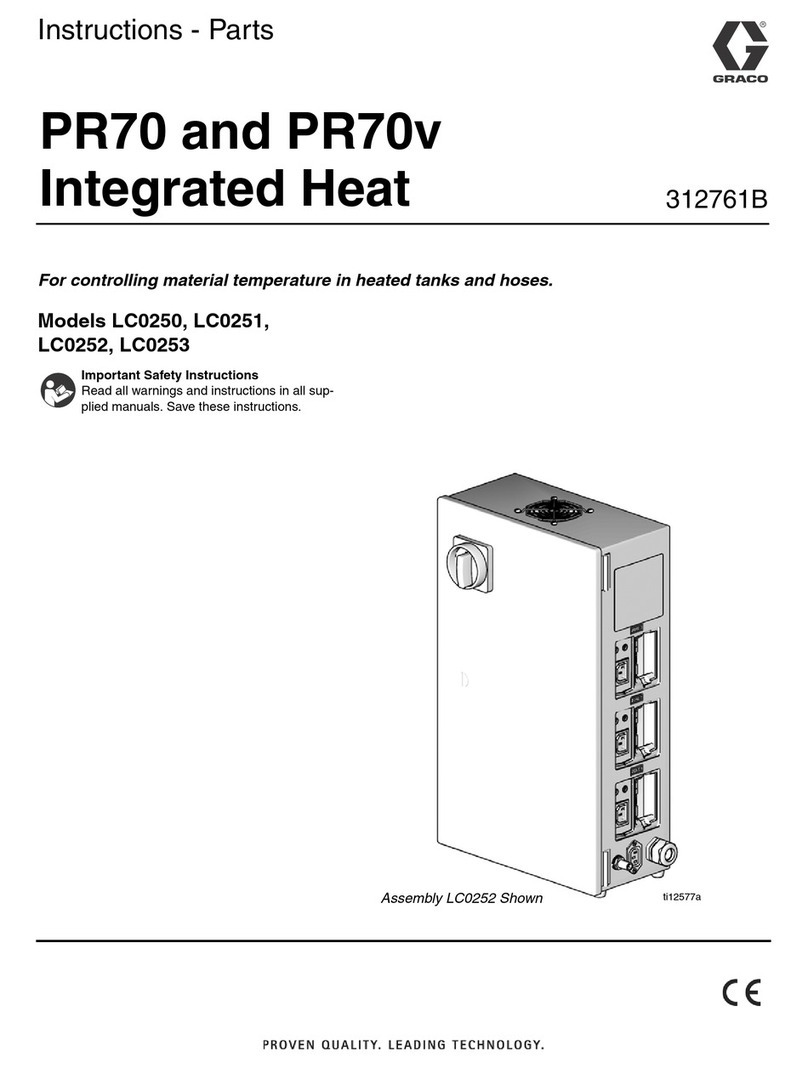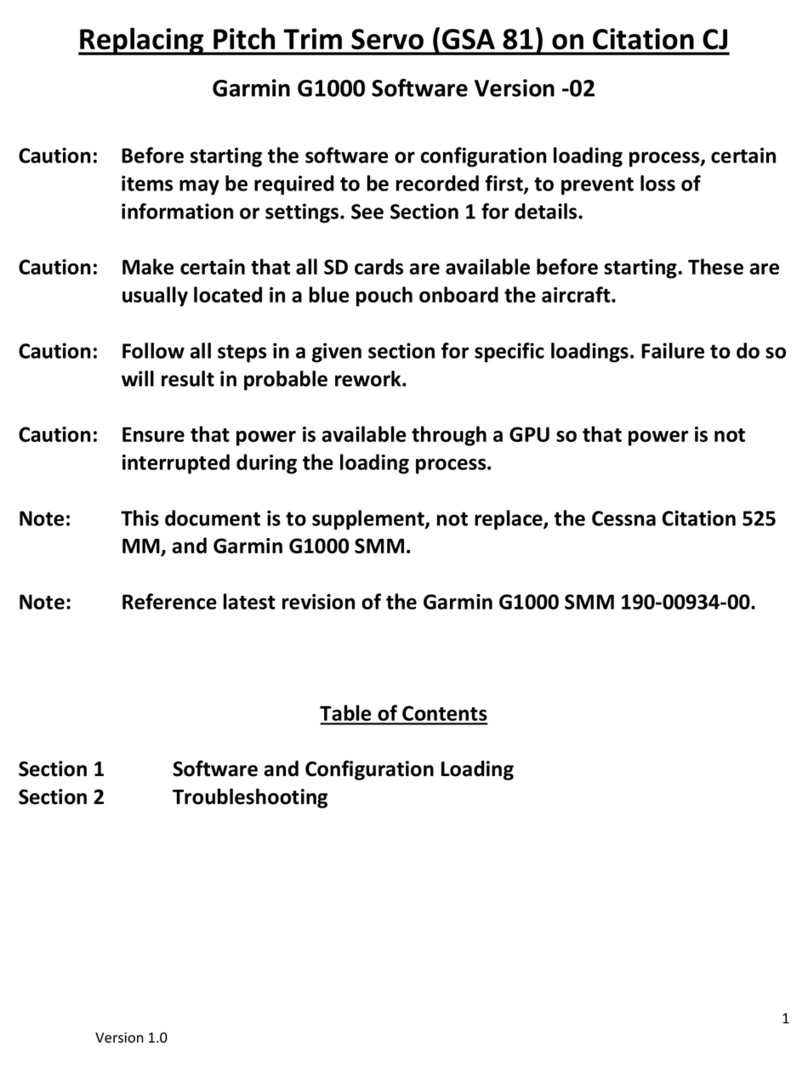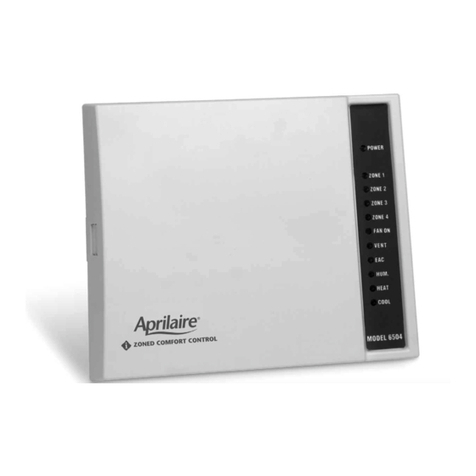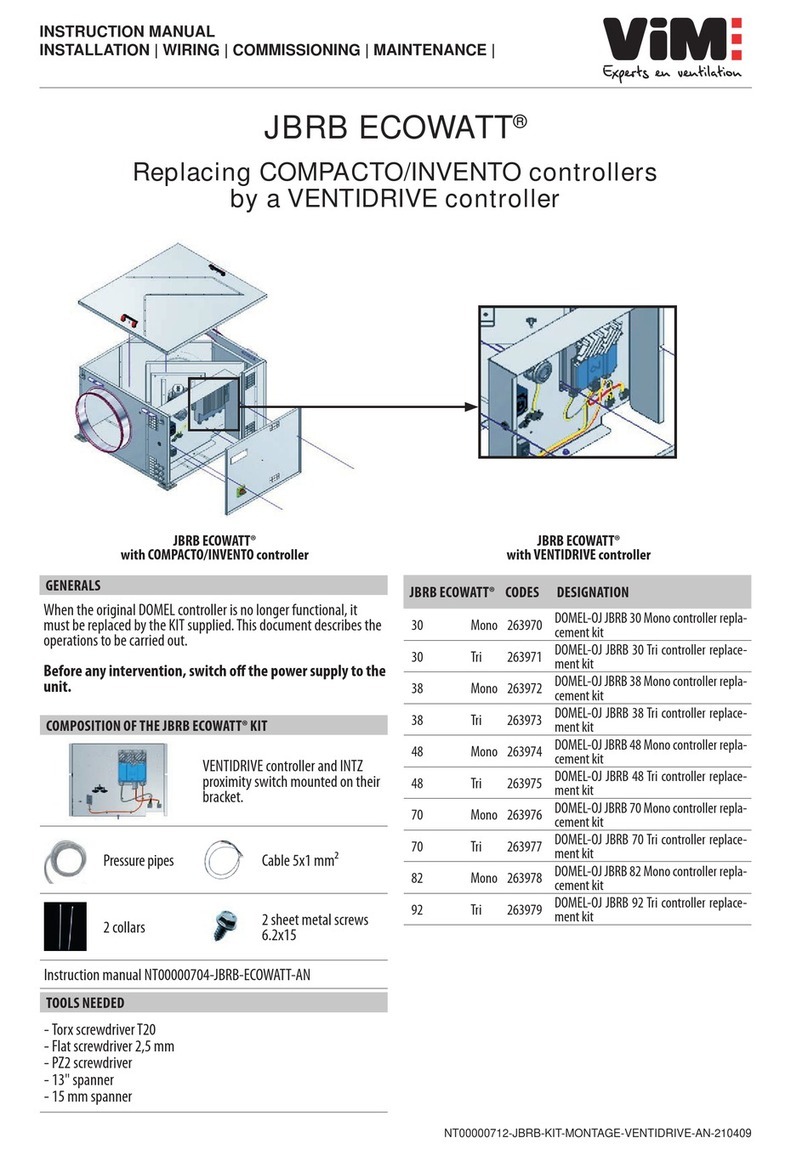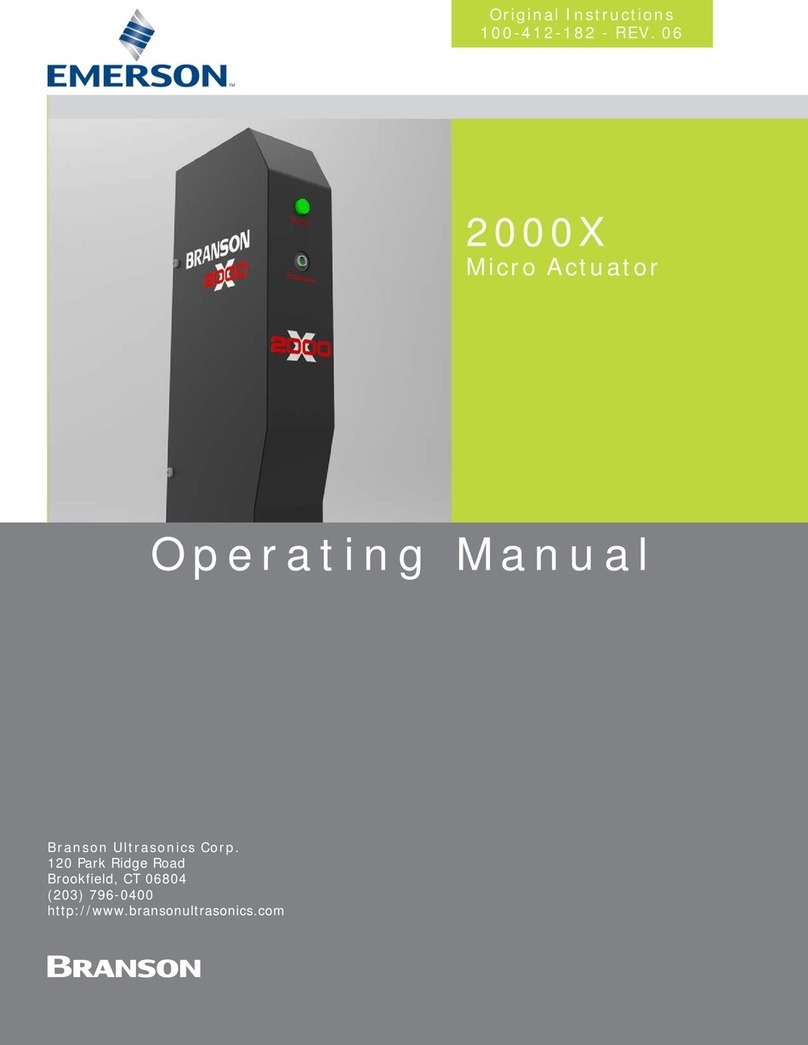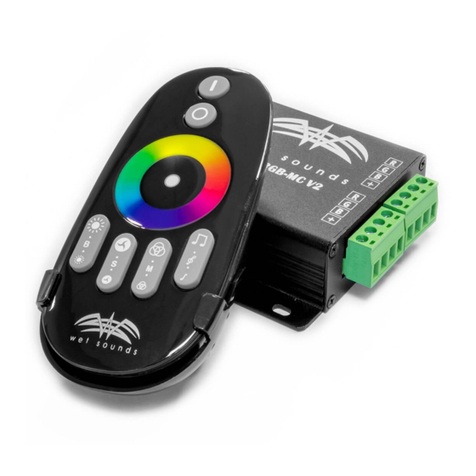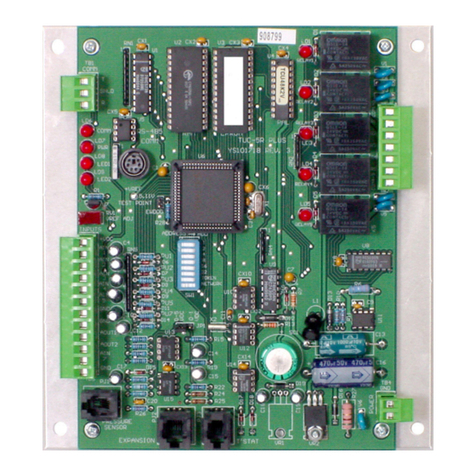Chargery BMS16T Series User manual

Revised : 6/4/2020
BMS16T
for 2S-16S LiPo/Li-ion, LiFe & LiTO
Low power consumption
High accuracy
2.8‖ TFT LCD display
Programmable
Chargery BMS16T
Battery Management System for 2S-16S LiPo/Li-ion, LiFe & LiTO
Low power consumption, High accuracy, 2.8‖ TFT LCD display, Programmable
Owners Manual
V 4.1
Main Unit Software Version 4.0
LCD Unit Software Version 4.01

LiPo & LiFe, LiTo Battery Management System BMS16T V4.1
www.chargery.com page 2 total 63
Thank you for choosing the Chargery BMS16T as your Battery Management System. This versatile
BMS is designed to be suitable for Electric Vehicles and mobile / fixed Energy Storage Systems
providing extensive flexibility for your specific application.
Please read the ENTIRE instruction manual to become familiar with the features and functions and
capabilities of the device before operating. Please see Video References for additional installation
& operational tips.
Overview:
The Chargery BMS16T is designed especially for LiPo, LiFe and LiTo battery packs applied to Energy
Storage Systems and Electrical Vehicles including E-Motorcycle, E-Scooter and so on. The unit can
measure or detect the battery voltage, cell voltage, charge & discharge current, battery
temperature, and battery SOC (State of Charge), with the information displayed on the TFT color
LCD screen. It has an Internal balancing function to balance cells to maintain optimal operations
of the battery pack being managed.
Feel free to send an email to jasonwang[email protected] or call at 86 755 2643 6165 should you have
any questions and suggestions.
Jason Wang
Edited by Steve_S from https://diysolarforum.com .
Revised: June, 15, 2020

LiPo & LiFe, LiTo Battery Management System BMS16T V4.1
www.chargery.com page 3 total 63
Table of Contents
Safety Notes ..................................................................................................................................................................5
Warning ...................................................................................................................................................................5
Copyright ................................................................................................................................................................5
Specifications ................................................................................................................................................................6
Protection functions ....................................................................................................................................................6
Version History .............................................................................................................................................................7
Update / Change log ..................................................................................................................................................8
Order information........................................................................................................................................................9
Standard accessories .........................................................................................................................................9
Current Shunt .....................................................................................................................................................10
Optional accessories.................................................................................................................................................11
Relay delay time board....................................................................................................................................11
DC Contactor .......................................................................................................................................................11
Cold pressing copper tube terminal............................................................................................................12
Operational Description...........................................................................................................................................13
Special Features.........................................................................................................................................................14
Interface........................................................................................................................................................................15
Hardware Setup .........................................................................................................................................................17
Absolute maximum or Minimum ratings (Always refer to Manufacturer specifications)........17
Software Configuration............................................................................................................................................18
Parameters Setting----Configuration Values...................................................................................................19
Operating guideline...................................................................................................................................................22
SOC Calibration ..........................................................................................................................................................25
Balancer ........................................................................................................................................................................27
Balancing Indicator ...........................................................................................................................................28
Cell internal resistance (Impedance) test........................................................................................................29
Charge and discharge relay lectotype for BMS16T.......................................................................................31
Chargery DC Contactor Specifications.......................................................................................................32
Cold pressing copper tube terminal Specifications...............................................................................34
Chargery DC Contactor (DCC) configuration in Common and Separate Port.............................35
Current Calibration (Shunt)...................................................................................................................................36
Firmware Upgrades via USB Port.........................................................................................................................38
Update BMS main unit .....................................................................................................................................39
Continue to update LCD unit.........................................................................................................................39
Typical Cell Connections..........................................................................................................................................41
Typical 16S configuration................................................................................................................................42
4s + 4s + 6S with single BMS16T configuration example. ...............................................................43
Nissan Leaf battery 2P14S with BMS16T configuration example....................................................44
Separate Port Configuration example—with Chargery DCC......................................................................45
Separate Port Configuration example—with Mechanical relay.................................................................46
Common Port Configuration example—with Chargery DCC......................................................................47
Common Port Configuration example—with Mechanical relay.................................................................48
Relay Delay Time Board (optional accessory) ................................................................................................49
Relay Delay Board Implementation Examples:......................................................................................51
Relay Delay Board Implementation Examples con't............................................................................52

LiPo & LiFe, LiTo Battery Management System BMS16T V4.1
www.chargery.com page 4 total 63
Related parts ...............................................................................................................................................................53
Total solution on E-Vehicle application ..............................................................................................................54
Supplemental: Solid State Relay supplemental information ....................................................................55
Supplemental: Single Relay with 2 channel Opti-Coupler .........................................................................56
Supplemental:Equipment Voltage Calibration..............................................................................................57
Supplemental: Reference Documents & Video links ....................................................................................59
Supplemental: BMS power consumption..........................................................................................................60
Frequent questions ...................................................................................................................................................61
Warranty and Service...............................................................................................................................................63

LiPo & LiFe, LiTo Battery Management System BMS16T V4.1
www.chargery.com page 5 total 63
Safety Notes
Please read the entire manual completely before using, to ensure safe and efficient use.
1. Ensure the BMS program and settings match your battery pack, otherwise the battery may be damaged
and a dangerous situation may arise, especially for Lithium based batteries, which may catch fire.
2. Use the Battery Cell Manufacturers specifications and information when configuring your BMS.
3. For Energy Storage System and Electric Vehicle applications, there are many different requirements,
please adjust those key parameters carefully for your application, or contact us for more details.
4. Do not allow water, moisture, metal wires or other conductive materials to come in contact the device.
5. Never charge or discharge any battery having evidence of leaking, expansion/swelling, damaged outer
cover or case, color-change or distortion.
6. Do not try to charge ―non-rechargeable‖ dry cells.
7. Do not mix batteries of different types, different capacities or from different manufacturers, all cells used
should be of matching specifications.
8. Do not exceed the battery manufacturer’s suggested maximum charge and discharge rates.
9. Carefully follow the battery pack manufacturer’s recommendations and safety advice.
Warning
1. The Current shunt must not make contact with any metal including the BMS case
2. The BMS case should not be in direct contact to any metal
3. Current shunt must connected to the Battery Pack Negative !
4. Prevent BMS from vibrations and shaking
5. Ensure the BMS case does not make contact with battery wiring in any way.
Copyright
Copyright@Chargery Power Co., Ltd. All rights reserved.
Without prior written consent by Shenzhen Chargery Power Co., Ltd, any units or individual extract and copy
parts or entire contents of this manual, and transmission in any form is illegal and strictly prohibited.
The product described in this manual, may include copyright software ownership belongs to Shenzhen
Chargery Power Co., Ltd and its licensee, except getting the permission from relevant rights holders,
otherwise any copy, distribute, modify, excerpt, decompile, disassemble, decrypt, reverse engineering, lease,
transfer, sub-license, as well as other acts of infringement of software copyright is strictly prohibited, but
apart from the restrictions prohibited by applicable law.

LiPo & LiFe, LiTo Battery Management System BMS16T V4.1
www.chargery.com page 6 total 63
Specifications
1. Battery range: 2S-16S LiPo & LiFe, LTO battery pack on BMS16T
2. Accurate scope of the cell voltage: -5mV/+5mV on BMS16T
3. Cell Voltage display range: 0.10~4.99V
4. The voltage of external power:13-60V, 3A
5. Balance current:1.2A per cell
6. Temperature display range:-20℃~150℃,
7. SOC indicator:
RED area @ 0~15% of SOC
YELLOW area @ 16~35% of SOC
GREEN area @ 36~100% of SOC
8. Main module Size: 124×95×30 (L×W×T, mm) or 4.88×3.74×1.18 (L×W×T, inch)
9. Main module weight: 365g excluding accessories
10. Display module size:96×80×24 (L×W×T, mm) or 3.8×3.2×0.95 (L×W×T, inch)
11. Display module weight:130g
12. Warning LED: 11000mCd, @ 2.0V, 20mA
13. Warning beeper: 85dB @ 12V, 25mA
14. Package: AL alloy case
Protection functions
1. Cell count error protection
2. Over charge protection
3. Under voltage protection
4. Over current protection when charge or discharge
5. High temperature protection
6. Low temperature protection (on LCD unit V3.03)
7. Over differential cell voltage protection in discharge
8. Over differential battery temperature protection
9. Under SOC protection

LiPo & LiFe, LiTo Battery Management System BMS16T V4.1
www.chargery.com page 7 total 63
Version History
Software Version of LCD
unit
Description
V3.0
Released first time
V3.01
debug a mistake on display
V3.02
adjusted Maximum cell difference can be set up to 1000mV
V3.03
Add low temperature cutoff
V4.0
Add WH setup
Add AH display
Add Balancing indicator
V4.01
Simplify current calibration,
Software Version of
main unit
Description
V1.18
first released
V1.19
Optimize over charge protection, don’t cut off charge when cell voltage
difference over setup.
V1.20
optimize current detection
V1.21
add current mode send out
V1.22
Add SOC send out
V4.0
Add cell internal resistance measurement
Add cell internal resistance send tout
Optimize SOC calculation

LiPo & LiFe, LiTo Battery Management System BMS16T V4.1
www.chargery.com page 8 total 63
Update / Change log
1. Added RS232 port, allowing for external devices to read out the data from the BMS. See Additional
information Supplemental: Reference Documents & Video links
2. Improved cell voltage detection accuracy
3. Added over current protection during balancing
4. Added low temperature protection(on LCD unit V3.03)
5. Add WH setup that is used for SOC calculation (on V4.0)
6. Add balancing indicator
7. Add cell impedance measurement and send out to R232.
8. Add WH, AH send out to RS232
9. Add cooling fan connector (on hardware V3.2), optional cooling fan can speed up balancing, fan speed is
adjusted automatically (on program V4.0)
10. Optimized SOC accuracy, new approaches are voltage based and coulomb counting, consideration the cell
impedance at the same time. Please setup accurate battery capacity (AH) and battery power (Wh) on
Program setup menu before using the BMS.
11. Added current, AH and WH, SOC interface, it is easy to read charge or discharge current, capacity, power
and state of Capacity of battery pack on one interface.
12. Relay controller use 12V 3A large current regulator from 8S battery pack. It can drive larger current
mechanical and state solid relays.
13. If using external adapter, the BMS can support 2S-8S battery, the external voltage range is 15-30V.
14. The BMS uses one Current Shunt to detect Charge & Discharge current per battery pack. The BMS
controls Charge & Discharge relays separately

LiPo & LiFe, LiTo Battery Management System BMS16T V4.1
www.chargery.com page 9 total 63
Order information
Model
Description
Accessories
BMS16T(BMS16Pro)-100
100A charge and discharge
100A shunt, and standard accessories
BMS16T(BMS16Pro)-300
300A charge and discharge
300A shunt, and standard accessories
BMS16T(BMS16Pro)-600
600A charge and discharge
600A shunt, and standard accessories
Standard accessories
USB data cable: Update main
unit and LCD unit
Cell Balance wire: connect cell
to BMS balance port, 600mm
DCC/Relay controller wire:
cut off charge /discharge ,
600mm.
Temperature sensor: 600mm,
monitor battery temperature.
Warning LED, 300mm
Warning Beeper, 300mm
Current sensor wire, 600mm,
monitor charge /discharge
current
Communication wire (4.5
meters), connect main unit to
LCD unit
COM3 Data line: connect to
external device, send out all
data

LiPo & LiFe, LiTo Battery Management System BMS16T V4.1
www.chargery.com page 10 total 63
Current Shunt
A single shunt is used for the BMS16T, it is delivered with BMS and other standard accessories. The BMS16T
detects the charge and discharge currents using the same shunt. All supplied shunts are voltage and current
calibrated prior to delivery. If you exchange the shunt, 75mV or less is recommended, and need calibrate
again.

LiPo & LiFe, LiTo Battery Management System BMS16T V4.1
www.chargery.com page 11 total 63
Optional accessories
Relay delay time board
It is only used with a mechanical relay and/or DC contactor without
surge current suppressing circuit.
DC Contactor
CHARGERY DCC has 4 models: DCC-100HB :12V 100A ,
DCC-200HB: 12V 200A, DCC-300HB: 12V 300A, and DCC-600HB: 12V 600A
Notes
The DCC is used for cut off charge or discharge when any cell voltage reach settings to prevent any cell
from damage and possibly fire.
If without DCC, BMS will only warn by Beeper sound and LED flash.
One DCC can be used in a Common port such as a Solar system, instead of two SSR's or relays.
The Relay Delay Time board is to avoid a surge current when start to charge or discharge. If using a
CHARGERY DCC, the delay board is not required, because it has a Built-in the surge suppressing circuit.
For other SSR or mechanical relay, please consider the surge current seriously and make a suitable plan.
Relay delay time board

LiPo & LiFe, LiTo Battery Management System BMS16T V4.1
www.chargery.com page 12 total 63
Cold pressing copper tube terminal
When you order the DCC, the tube terminal and bolts will be delivered with DCC.
DCC model
DCC-100HB
DCC-200HB
DCC-300HB
DCC-600HB
Terminal model
10-6
25-6
50-8
50-8

LiPo & LiFe, LiTo Battery Management System BMS16T V4.1
www.chargery.com page 13 total 63
Operational Description
The BMS16T includes a Main Unit and a Display Module. Once the hardware installation is completed and
ready, power on the BMS16T to finish setting up all of the parameters using the Display Module. The BMS16T
will use the saved settings even if the Display Module is disconnected from the Main Unit. Removing the
Display Module disables the data display, beeper and warning LED but the BMS will still function properly and
can cut off charge / discharge when any set condition requires it. You can connect an external device such as
a computer to the COM3 port on the Main Unit to receive all RS232 data. To modify the parameters in setup,
please reconnect the Display Module, no data can be written to the BMS from an external application at this
time.
The BMS16T can be used with any lithium battery charger, when any cell is over charged, the BMS16T will
open the charge relay to cut off charge, if used with a CHARGERY charger, the charge control is handled by
connecting the CHARGERY charger to the BMS16T on COM1, when any cell reach OVP, the charge current will
decrease automatically to prevent any cell damage. This feature can save charge relay cost and shorten
charge time.
More information on the RS232 Data Interface can be found in Supplemental: Reference Documents & Video
links
Special NOTE: The RS232 output is wired in a Cross Over fashion. Refer to RS232 Document for pin out. This
can be wired to any type of adapter being used, such as RS232, RJ-11, RJ-45. Pin outs must be observed
accordingly.

LiPo & LiFe, LiTo Battery Management System BMS16T V4.1
www.chargery.com page 14 total 63
Special Features
1. The BMS16T uses advanced ADC measurement technology, high accuracy, high voltage and high current
detection circuit. The maximum voltage measurements tolerance is within 5mV at up to 8S LiPo battery
(34V)
2. Supports regenerative braking, during braking operation it can charge the battery pack and the discharge
power (Wh) will increase in response to the braking power.
3. Charge/discharge current up to 600A. Larger current support can be custom ordered.
4. 1.2A per cell balance current is very useful for large capacity battery pack, this feature can restore all
cell voltage balance in the shortest time. Over temperature protection ensures the system safety during
balancing.
5. BMS16T calculates and displays the charge and discharge power (Wh), generally the battery rated power
is rated voltage multiplied by rated battery capacity.
6. TFT LCD screen provides rich information including current, voltage, power, capacity, battery status, SOC
and temperature and so on.
7. BMS16T features maximum safety protections, within the range parameters that can be setup, BMS16T
will alarm and cutoff charge or discharge according to users’ setup, out of range parameters and
triggered absolute maximum settings BMS16T will force cutoff charge / discharge to protect the battery.
8. Minimize the power consumption by draw current from all cells or external power supply.
9. Dual power design, the unit can be powered by all the cells or an external power supply.
10. Detect cell count at any time, and compare with the count detected when switched on first time. If
inconsistent, the device will alarm and cutoff charge or discharge according to user setup, this is a safety
feature is if a cell becomes loose.
11. Sound alarm and LED alarm will be triggered if any warning events occur, it will wait several seconds,
then disconnect charge / discharge if required. The delay time can be programmed.
12. The Charge and Discharge relays are controlled independently.
13. Two temperature sensors monitor battery temperature for different positions on the pack.
14. Supports upgrading the firmware program by USB port.
15. BMS16T provide users the maximum flexibility, key parameters can be programmed.
16. BMS16T displays battery SOC as a dial gauge. Cell count, battery pack voltage and battery gauge (%)
temperature is displayed simultaneously.
17. In case the battery pack is not to be charged / discharged and put into storage mode, Press STOP
button enter into Sleep Mode to save energy consumption, Charge / Discharge are disabled and the LCD
back light is turned off. Press any key to resume normal work mode.
18. LCD back light ON time can be programmed to save energy, when it is OFF, press any key to activate.

LiPo & LiFe, LiTo Battery Management System BMS16T V4.1
www.chargery.com page 15 total 63
Interface
BMS16T Main Module
BMS16T Display Module

LiPo & LiFe, LiTo Battery Management System BMS16T V4.1
www.chargery.com page 16 total 63
Power Selector
Battery pack to power the BMS. the battery pack must be 8S to 16S LiFe or
LiPo or LiTO. External power supply, BMS16T supports 2S to 16S LiPo, LiFe
or LiTo battery pack. The external input supply Voltage range is 13V to 60V @
3A.
External power
port
External power input, the voltage should be 15V to 60V, 3A minimum, the
current depends on the relay, the connector is 5.5*2.1 DC jack.
Charge
controller
Charge controller, connected to relay / DC contactor. will "OPEN" the relay by
releasing the coil power when any cell voltage is OVER setup values.
Otherwise the BMS16T will output 12V power the coil to close the relay when
everything is within programmed settings.
The relay must be a "Normally Open" type.
Discharge
controller
Discharge controller, connected to relay / DC contactor. will "OPEN" the relay
by releasing the coil power when any cell voltage is UNDER setup values.
Otherwise the BMS16T will output 12V power the coil to close the relay when
everything is within programmed settings. The relay must be a "Normally
Open" type.
COM1
The COM1 port (black connector) is connected to external device such as
Charger. If connect to Chargery charger, BMS16T can control charge current
to shorten charge time
COM2
The COM2 (gray connector) port is connected BMS main unit to display
module by gray spring wire
COM3
Output RS232 level on the port, any external device can read out all data
from BMS16T
Temperature
sensor
Two temperature sensors monitor the battery temperature, the sensor must
tie to battery surface or gap of cells where the temperature should be the
highest during charge or discharge. The temperature range is -20 to 150℃
LED1)
Connect to high light LED, the LED will flash when any warning event
happened
Beeper1)
Connect to beeper or others to alarm. It will output 12V 25mA max.
Current sense
Connect to single current shunt. Charge current and discharge current can be
measured simultaneously.
USB
Connect to PC update the firmware by Chargery UpdateTool.exe
Socket 1
Connect to 2S to 8S battery,
Socket 2
Connect to 9S to 16S battery. for over 8S battery, please connect 8S battery
to socket 1 and then connect other cells to socket 2, such as 8S + 2S for 10S
and 8S + 5S for 13S
Note:
1) On the BMS display module

LiPo & LiFe, LiTo Battery Management System BMS16T V4.1
www.chargery.com page 17 total 63
Hardware Setup
1. Prepare the BMS wiring harness by attaching ring terminals on the ends. Isolate any leads which will not
be used to prevent accidental contact.
2. Attach the leads to the cells and install temperature sensors on pack.
3. Connect Beeper, LED, to the Display Module.
4. Ensure the BMS Main Module power switch is OFF.
5. Connect the shunt, current sensor wire, relays, relay controller
wires and Temperature Sensors to BMS16T Main Module.
6. Connect battery wires to BMS16T, ensure correct cell polarity.
See the "Typical Connections" diagrams starting on page 42.
7. Connect the Main Module to Display Module using the COM2 port
8. Turn on BMS by moving the Power Selector to turn on the device.
9. BMS16T will initialize the beeper and LED, beeper will sound one time, then displays BMS16T and version,
the battery type and cell count interface is displayed. Three battery types LiPo, LiFe and LTO can be
selected. Cell count range is 2S to 8S, the cell count will be identified automatically when the battery
pack connect to the BMS16T.
Warning
1. The Current shunt must not make contact with any metal including the BMS case
2. The BMS case should not be in direct contact to any metal
3. Current shunt must connected to the Battery Pack Negative !
4. Prevent BMS from vibrations and shaking
5. Ensure the BMS case does not make contact with battery wiring in any way.
Absolute maximum or Minimum ratings (Always refer to Manufacturer specifications)
Maximum cell voltage
LiPo
4.35V
Larger than the absolute maximum voltage,
BMS16T will force charge cut off
LiFe
3.90V
LiTO
2.80V
Minimum cell voltage
LiPo
2.50V
Less than the absolute minimum voltage, BMS16T
will force discharge to cut off
LiFe
2.00V
LiTO
1.50V
Battery temperature
LiPo
LiFe
LiTO
1℃-
80℃
Over / Under temperature, BMS16T will cutoff the
charge and discharge
Next Step is to configure the Software.

LiPo & LiFe, LiTo Battery Management System BMS16T V4.1
www.chargery.com page 18 total 63
Software Configuration
Warning
When setting up parameters, the “current calibration” shouldn't be modified, otherwise
the current reading will be wrong.
INSTRUCTIONS on Navigating Menu
1) Press SET/START button for 3 seconds enter into Program Setup interface.
2) Press UP or DOWN button to select the item, press SET/START quickly to make the value flash, and press
UP or DOWN to change the value. Press SET/START button quickly to confirm the change. After finishing
all of the setup, press SET/START for 3 seconds to save & quit the setup menu.
3) When you quit setup mode, BMS16T will save all the parameters till next change.
Setup the highest battery temperature, when over
the temperature, BMS will cut off charge or
discharge
Balance setup
Resume default value in factory
Setup battery pack capacity, 1000AH max. it is as a
reference when calibrate battery SoC.
Main unit Software version
Under the lowest temperature, STOP charge
Under the lowest temperature, STOP discharge

LiPo & LiFe, LiTo Battery Management System BMS16T V4.1
www.chargery.com page 19 total 63
Parameters Setting----Configuration Values
NOTE: Please keep the default setup values unless your application requires special settings.
Parameters
Min.
Type
Max.
Step
unit
Charge Protection
Over Charge Protection(P) Voltage
LiPo
3.90
4.20
4.35
0.01
V
LiFe
3.40
3.65
3.90
0.01
V
LiTO
2.50
2.75
2.80
0.01
V
Over Charge Release(R) Voltage
LiPo
3.80
4.10
4.25
0.01
V
LiFe
3.30
3.55
3.80
0.01
V
LiTO
2.40
2.65
2.70
0.01
V
Over Charge current
0
50
600
1
A
Discharge Protection
Over Discharge Protection(P) Voltage
LiPo
2.75
3.00
4.00
0.01
V
LiFe
2.00
3.00
3.50
0.01
V
LiTO
1.50
1.85
2.40
0.01
V
Over discharge Release(R) Voltage
LiPo
2.75
3.20
4.00
0.01
V
LiFe
2.00
3.10
3.50
0.01
V
LiTO
1.60
1.95
2.50
0.01
V
Over Discharge current
0
300
600
1
A
SOC--- Battery gauge
5
20
90
1
%
Temperature Protection
Battery Temperature
30
50
80
1
℃
Difference(Diff) of battery Temperature(Temp)
5
10
30
1
℃
Voltage balance Protection
Difference(Diff) of cell voltage
5
30
300
1
mV
Others
Temperature Unit
℃
℉
Key Beeper
ON
OFF
LCD Back-Light time(1)
1
10
999
1
min
Cut-Off Delay Time(2)
0
10
60
1
Sec's
Current Calibration(3)
SET
Current in Storage
0
A
Current in Charge
0
20
100
1
A
Current in Discharge
0
-20
-100
1
A
Temperature Alarm(4)
ON
OFF
Cell Empty Voltage (5)
1.50
2.50
4.34
0.01
V
Cell Full Voltage(5)
1.51
4.20
4.35
0.01
V
Default settings
Choose Enable and Press SET/START restores
factory defaults
Balance Parameter setup: Press SET/START to setup and press for 3 seconds to quit setup
Balance Start Voltage(6)
LiPo
3.3
3.6
4.1
0.01
V
LiFe
3.0
3.2
3.4
0.01
V
LiTO
1.75
2.20
2.6
0.01
V
Balance Stop Diff Voltage(7)
5
12
200
mV
Balance in Charge
ON means Balance start during charge, OFF disable.
Balance in Discharge
ON means Balance start during discharge, OFF disable.
Balance(8) in Storage
ON means Balance start during storage, OFF disable.

LiPo & LiFe, LiTo Battery Management System BMS16T V4.1
www.chargery.com page 20 total 63
Parameters
Min.
Type
Max.
Step
unit
Battery Capacity AH(9)
1
1
1000
1
AH
Battery Power WH(11)
1
1000
99999
1
WH
Low temp. cutoff in charge
-20
2
20
1
℃
Low temp. cutoff in discharge
-20
-10
20
1
℃
Version:BMS16C3_v4.0(10)
NOTES:
1. Always on means the LCD back-light will be ON forever.
2. NO means BMS16T will not cut off charge or discharge but alarm by LED flash and Beeper Sound.
Cut-Off Delay Time is very important and different for different battery capacities and applications,
please carefully verify and use proper settings for your application. For EV's, you can select NO to control
the EV manually, NOT controlled by the BMS16T, but when the cell voltage and/or temperature trigger
the absolute maximum or minimum settings, the BMS16T will force the cut off to Charge / Discharge to
protect the battery and prevent damage and the possibility of fire or explosion.
3. Current Calibration is not recommended unless you are using a different shunt. Voltage and current is
calibrated before delivery for the supplied shunt.
4. Temperature Alarm OFF means Battery and Difference of battery Temperature is disabled.
5. Cell Empty Voltage and Cell Full Voltage is to set up cell voltage bar graph, the value should be as
same as Over Charge Protection(P) Voltage and Over Discharge Protection(P) Voltage
6. Battery start voltage, when minimum cell voltage over the setup value, the balancing will start
automatically
7. Balance Stop Diff Voltage, Setup the minimum cell difference, when the difference of the cell voltage
under setup value is reached, balancing is stopped automatically
8. Balance switcher, default Balance is OFF,
a) If balance "in storage" setup is ON, balance
will start in storage status, STORAGE means
charge or discharge current under 1A. So the
current shunt and current sensor wire must
be connected to BMS. For EV's, balance "in
storage" OFF is suggested. For storage
systems, ON is recommended.
b) If balance "in charge" setup is ON, balance
will start during charge
c) If balance "in discharge" setup is ON, balance
will start during discharge
d) Balance current is 1.2A max. per cell,
9. Battery Capacity AH, Setup accurate battery capacity, See the cell specification / datasheet.
Continuous charge-discharge cycles will decrease capacity over time. Usually once the battery pack
reaches 70% of the original capacity, the pack is typically decommissioned and replaced.
10. Main Unit software version
11. Battery Power WH, Setup accurate battery power, the measurement unit is in WH (Watt Hours). If you
do not have the values on the battery label or data sheet, it can be calculated as shown below.
WH=Rated battery voltage x battery capacity
One Li-on (NMC) cell, rated voltage is 3.6V, if capacity is 10AH, battery power is 36WH
One LiPO cell, rate voltage is 3.7V, if capacity is 10AH, battery power is 37WH
One LiFe cell, rate voltage is 3.25V, if capacity is 10AH, battery power is 32.5WH
Other manuals for BMS16T Series
1
This manual suits for next models
7
Table of contents
Other Chargery Controllers manuals


